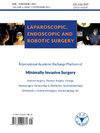结直肠癌术后良性直肠吻合口狭窄的治疗方法:系统综述
Q3 Medicine
引用次数: 0
摘要
目的 评估结直肠癌术后良性直肠吻合口狭窄(AS)的各种治疗方法。 方法 对文献进行了系统性回顾,重点关注报道良性 AS 不同治疗方法效果的研究。检索了 2000 年 1 月至 2023 年 12 月期间的 PubMed、Embase、Scopus、中国国家知识基础设施和 Cochrane 图书馆数据库。结果共有19篇论文确定了一系列治疗策略,包括非手术吻合口扩张术、内镜下球囊扩张术(EBD)、经肛门微创手术(TAMIS)、自膨胀金属支架(SEMS)、内镜下切开术(EI)以及前列腺切除器械等新技术。非手术吻合口扩张术可作为下部 AS 的初始治疗方法。在EBD无效的病例中,EI显示出良好的前景,为治疗强直性脊柱炎提供了另一种方法。TAMIS 和 SEMS 对难治性病例的疗效更高,其中 TAMIS 对严重纤维化或完全闭合的 AS 尤为有效。结论虽然非手术吻合口扩张术和 EBD 等传统方法仍是良性 AS 的一线治疗方法,但 EI、TAMIS 和 SEMS 等先进技术提供了前景广阔的替代方法,尤其是在难治性病例中。应根据患者的具体情况选择治疗方法,同时考虑到所需的专业技术和并发症的可能性。本文章由计算机程序翻译,如有差异,请以英文原文为准。
Therapy for benign rectal anastomotic stricture after surgery for colorectal cancer: A systematic review
Objective
To evaluate various treatment methods for benign rectal anastomotic stricture (AS) following surgery for colorectal cancer.
Method
A systematic review of the literature was conducted, focusing on studies that reported outcomes of different treatment modalities for benign AS. The PubMed, Embase, Scopus, China National Knowledge Infrastructure, and Cochrane Library databases were searched from January 2000 to December 2023. The inclusion criteria were studies involving human subjects, published in English, and reporting on therapeutic outcomes for benign AS.
Results
A total of 19 papers identified a range of therapeutic strategies, including nonoperative anastomotic dilation, endoscopic balloon dilation (EBD), transanal minimally invasive surgery (TAMIS), self-expandable metal stents (SEMS), endoscopic incision (EI) and newer techniques such as prostate resection instrumentation. Nonoperative anastomotic dilation can serve as an initial treatment for lower AS. EI demonstrated promise in cases where EBD was ineffective, providing an alternative method for managing AS. TAMIS and SEMS showed higher efficacy in refractory cases, with TAMIS being particularly effective for severe fibrotic or completely closed AS. The use of rigid instrumentation with an electric knife for transanal incisions demonstrated precision but lacked the flexibility needed for complex procedures.
Conclusion
While traditional methods such as nonoperative anastomotic dilation and EBD remain first-line treatments for benign AS, advanced techniques such as EI, TAMIS, and SEMS offer promising alternatives, particularly in refractory cases. The choice of treatment should be tailored to individual patient conditions, with consideration for the technical expertise required and the potential for complications.
求助全文
通过发布文献求助,成功后即可免费获取论文全文。
去求助
来源期刊

Laparoscopic Endoscopic and Robotic Surgery
minimally invasive surgery-
CiteScore
1.40
自引率
0.00%
发文量
32
期刊介绍:
Laparoscopic, Endoscopic and Robotic Surgery aims to provide an academic exchange platform for minimally invasive surgery at an international level. We seek out and publish the excellent original articles, reviews and editorials as well as exciting new techniques to promote the academic development.
Topics of interests include, but are not limited to:
▪ Minimally invasive clinical research mainly in General Surgery, Thoracic Surgery, Urology, Neurosurgery, Gynecology & Obstetrics, Gastroenterology, Orthopedics, Colorectal Surgery, Otolaryngology, etc.;
▪ Basic research in minimally invasive surgery;
▪ Research of techniques and equipments in minimally invasive surgery, and application of laparoscopy, endoscopy, robot and medical imaging;
▪ Development of medical education in minimally invasive surgery.
 求助内容:
求助内容: 应助结果提醒方式:
应助结果提醒方式:


